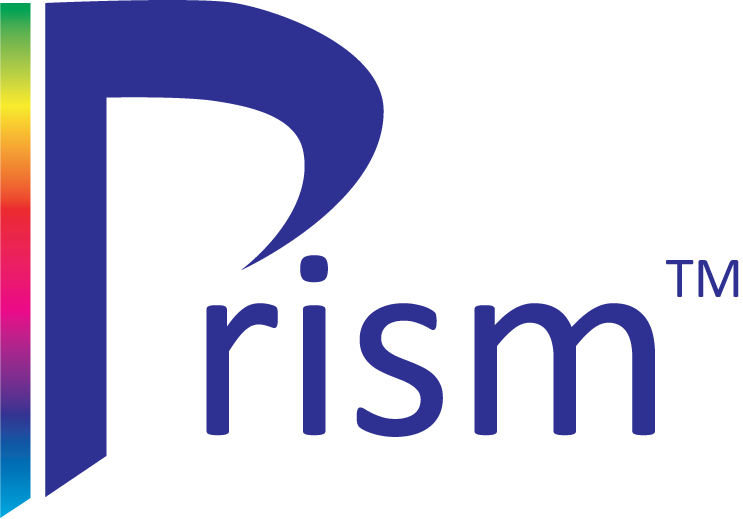
Prism™ frequency-division sensing technology enables the entire surface of free-form objects and touchscreens to sense hand, stylus, and forearm motion in 3D with no perceivable lag and to identify multiple users, hands, and objects.

Prism™ frequency-division sensing technology enables the entire surface of free-form objects and touchscreens to sense hand, stylus, and forearm motion in 3D with no perceivable lag and to identify multiple users, hands, and objects.


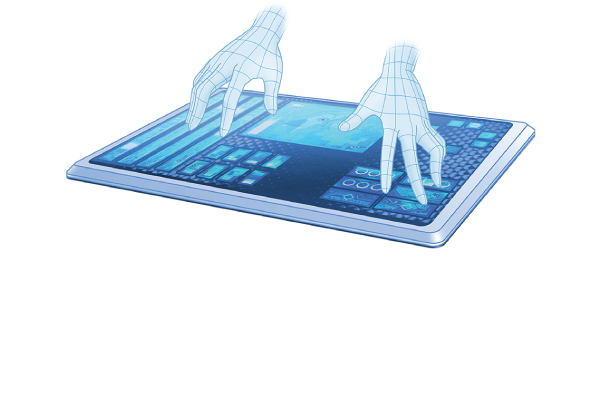
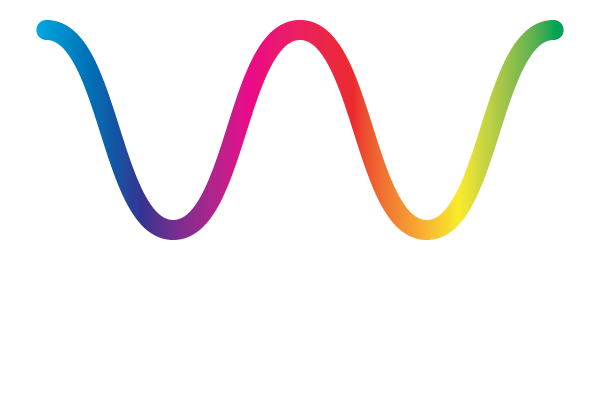
The Prism™ family of frequency division capacitive controllers simultaneously sense touch, stylus, grip, proximity, and in-air gestures. For the first time, a capacitive controller combines sub-millisecond latency, kHz sampling, and full-surface parallel sensing powered by a spectrum of unique signal frequencies. From slashing latency to new gestures to noise immunity to discriminating between hands, users, and objects, Prism™ will enable new user experiences compatible with industry standards.
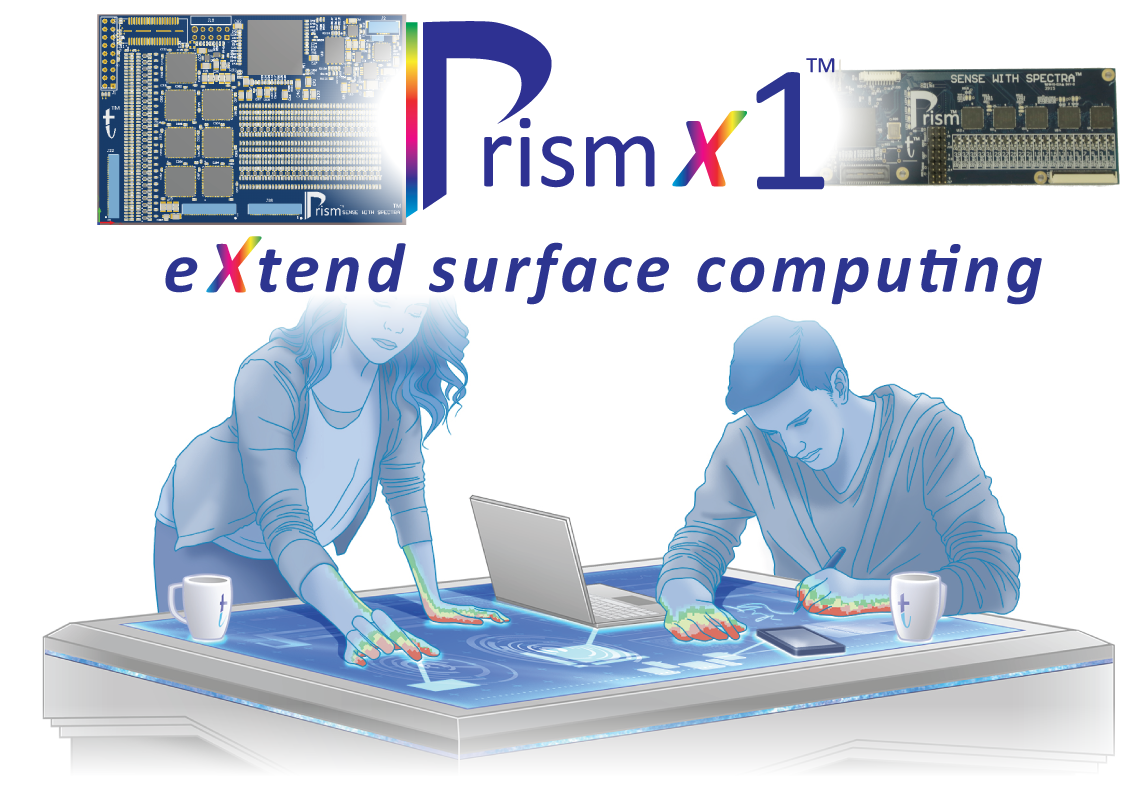
Prism X1™ is the industry first frequency-division capacitive controller for large interactive surfaces targeting digital whiteboards and tables. Prism X1™ enables multiple users, pens, and objects to simultaneously interact with large interactive surfaces without lag. Prism X1™ will offer the industry’s most realistic large-area touch and inking single-sensor solution. kHz-class sampling ensures every gesture or ink stroke, no matter how subtle, is captured. Sub-millisecond latency enables Prism X1™ to sense movement in near real-time laying the foundation for physical-grade, immediate response to input and new just-in-time UI. Prism X1’s™ unprecedented parallelism makes it the first capacitive controller to take a snapshot of the full input surface every time it scans. Coupled with high-resolution hover sensing several centimeters off the input surface, this parallelism enables Prism X1™ to reconstruct the real 2D and 3D geometry of hands, forearms, and objects in near real-time. Understanding the true geometry of human fingers, hands, and forearms enables new multi-finger and full-hand input gestures--as well as the ability to accurately reject spurious sensed inputs from the palm and forearm while inking. This parallelism and low-latency sensing also provides improved pressure sensing. This parallel snapshot of the input surface also allows Prism™-powered devices to identify passive and smart objects from a ruler to a pen to a coffee mug placed on the input area. When coupled with the right sensor design, a Prism X1™ device can also group sensed touches by user enabling simultaneous, collaborative interaction on large input surfaces like a digital whiteboard for the first time.

Coming in 1Q’2017, Prism X2™ shrinks the power of a Prim X1™ PCB controller into a small, low-power 8x8mm monolithic integrated circuit.
Launching in 1Q’2017, Prism G1™ is the industry first frequency-division capacitive controller for smart objects and VR, AR, and gaming input peripherals. Prism G1™ creates a digital skin that surrounds the entire surface of a free-form object, and a high resolution sensing field that extends a few centimeters outwards from the object’s surface. This digital skin and sensing field simultaneously sense touch and hover across an object’s entire surface enabling 3D hand, forearm, and grip reconstruction. Prism G1™ empowers VR / AR peripherals to see human contact in 3D to improve immersion and physics. Prism G1™ allows users to see their hands, fingers, and forearms in VR -- mirroring their physical world positions and movements precisely with sub-millisecond latency. Prism G1™ allows AR UI elements to be mapped around a user’s hands and fingers on physical input controls more precisely. And Prism G1™ enables more realistic physics that accurately take into account how an input peripheral is being grasped. Prism G1™ will also empower everyday objects like a club, racket, or ball to understand how they are gripped in real-time. These Prism-powered smart objects will be invaluable training tools in the physical world that help athletes understand how they really swing a racket or throw a ball in near real-time 3D. And these same smart physical objects can then be transported to the digital world where they can serve as 3D input controllers. Prism G1™ will also create smart car steering wheels that will delight drivers with new intuitive, immediate gesture commands and make them safer with 3D grip tracking.
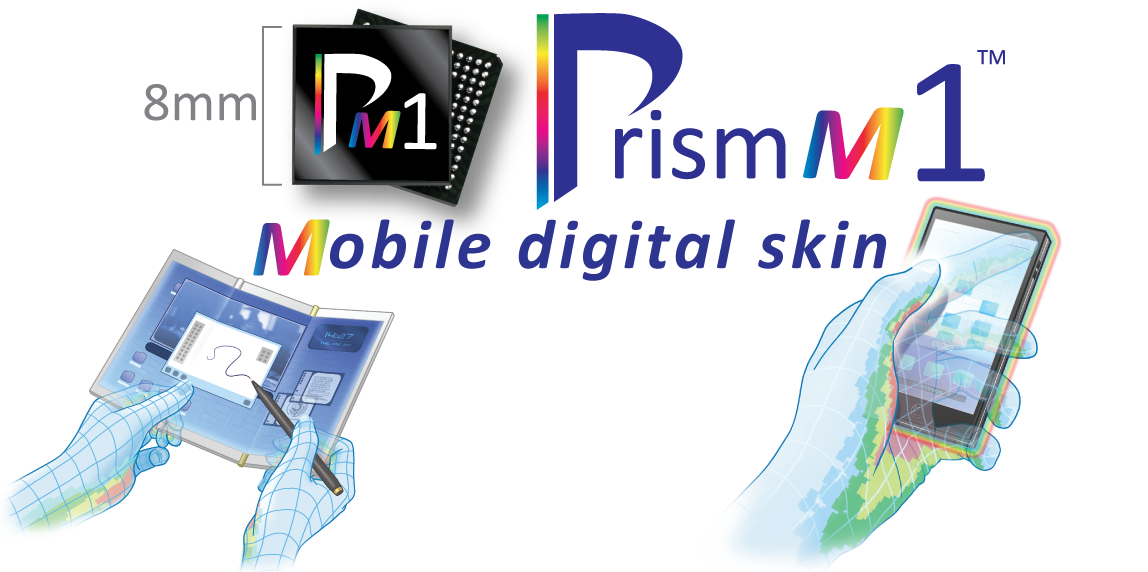
Launching in 1Q’2017, Prism M1™ is the industry first frequency-division capacitive controller for mobile devices spanning from phablets up to 15” laptops. Prism M1™ will offer the industry’s most realistic mobile touch and inking single-sensor solution. kHz-class sampling ensures every gesture or ink stroke, no matter how small, is captured. Sub-millisecond latency enables Prism M1™ to sense movement in real-time laying the foundation for physical-grade immediate response to input, new just-in-time UI, and more timely haptic feedback. Prism M1’s™ unprecedented parallelism makes it the first capacitive controller to take a snapshot of the full input surface every time it scans. Coupled with an ability to sense several centimeters away from the input surface in high resolution, this parallelism enables Prism M1™ to reconstruct the real 2D and 3D geometry of a user’s hands, grip, and forearms in near real-time. Understanding a user’s grip enables new adaptive interfaces that make it easier and more natural to input commands, and is essential in new flexible mobile form-factors where understanding how a device is gripped is a vital part of understanding how it is being used. This parallelism and low-latency sensing also provides improved pressure sensing and a superior rejection of spurious inputs like ignoring sensed input from a user’s palm while he or she is writing. When coupled with the right sensor design, a Prism M1™ device can also understand when it is handed to another user without triggering accidental input commands and with a seamless increase in security.